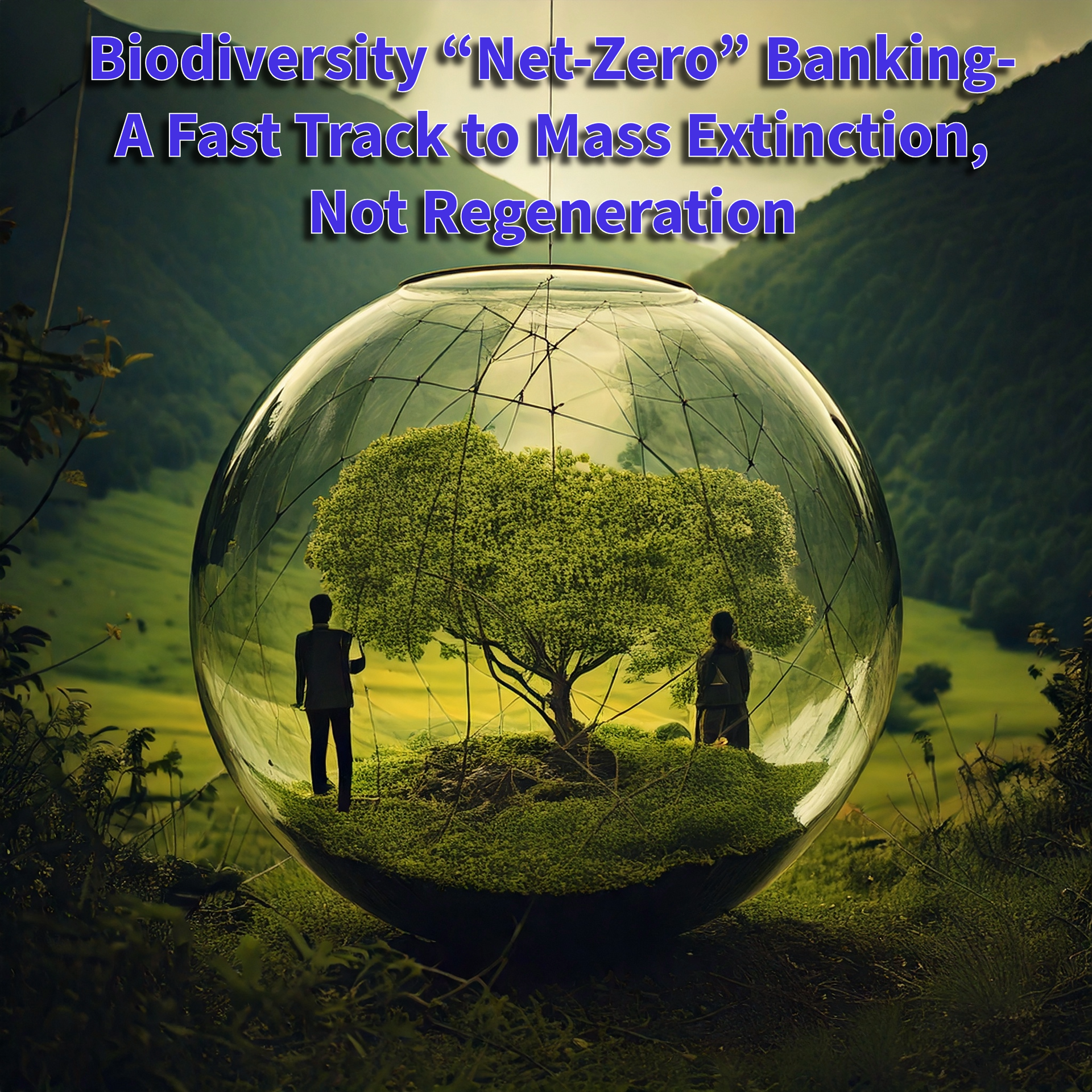The seductive maths of
“net-zero loss”
By Sam Kirsch, June 2025

New biodiversity banks are using credits to equal a net zero loss. As the laws are currently, the profit in doing so is great. The problem will continue with this strategy and no gain in regeneration will be realized. This is a legal profit-making industry that prioritizes which species will not become extinct based on the need of industry and residential expansion. This will eventually lead to total extinction of many species and privatize pollination and other essential jobs that nature provides.
The seductive maths of “net-zero loss”
Biodiversity banks promise to square the circle between continued land-hungry development and conservation. Developers buy “credits” that—for a fee—are supposed to deliver an equivalent gain in habitat elsewhere, producing a headline figure of
0 % net loss. In England, for example, most planning consents must now show a
10 % “Biodiversity Net Gain” (BNG), achievable either on-site, off-site or by purchasing statutory credits from a national register.
The idea is lucrative. Analysts expect biodiversity and nature-based credit markets to balloon to
US $48 billion by 2034—a growth curve that has financiers salivating.
Yet beneath the neat accounting lies an inconvenient ecological truth:
a spreadsheet gain does not re-create a living ecosystem, nor does it repair the intricate relationships that evolved over millennia.
Market logic trumps ecological logic
Because credits are priced, the market quickly sorts species and habitats by their profitability
rather than their ecological irreplaceability. Developers gravitate toward the
cheapest credits that meet regulatory minimums, while “difficult” habitats—ancient peatlands, old-growth forests, coastal wetlands—become rounding errors in a land deal.
Scientists have long warned that offsets create
perverse incentives: the promise of an easy trade-off can erode the will to avoid or minimise damage in the first place. A 2024 UN-led panel bluntly concluded that global
offsetting doesn’t work
and that like-for-like compensation must stay strictly local if it is to have any hope of integrity.
The extinction domino effect
When credits legitimise destruction in one place and restoration in another, the losses are front-loaded and certain, while the gains are uncertain, delayed and often lower quality. Recent modelling shows that allowing greater “flexibility” in offset rules sharply raises the risk of permanent biodiversity deficits.
In practical terms, this means:
- Local extirpations accumulate. Each approval licenses the erasure of a unique population; the promised offset may be hundreds of kilometres away, in a different micro-climate or soil type.
- Genetic diversity narrows. Relocation or re-creation rarely captures the full genetic variability that underpins resilience to pests, disease and climate shocks.
- Ecosystem functions unravel. Pollination, seed dispersal, soil formation and water regulation depend on networks of interacting species. Lose enough nodes and the web tears.
The end-game is a mosaic of profitable “green zones”
surrounded by biologically impoverished landscapes—what conservationists have called a
“licence to kill nature.”
Privatising nature’s unpaid labour
Perhaps the most alarming consequence is the
creeping privatisation of ecosystem services. By commoditising credits, we risk normalising the notion that essential processes—pollination, pest control, carbon sequestration—can be bought, sold and, if need be, siloed behind paywalls. If wild pollinators vanish because marginal ecosystems are repeatedly traded away, agribusiness will simply substitute managed hives or robotic pollinators, passing the cost to consumers.
We have been here before. Carbon markets taught us that when the financial product becomes the goal,
real-world emissions decline far more slowly than the credits imply. Biodiversity credits are at even greater risk because measuring “like for like” is exponentially harder. The
World Resources Institute
cautions that voluntary biodiversity credits “must clear a far higher integrity bar than carbon,” yet current laws do not require it.
Why “no net loss” is not enough
“Net-zero loss”
is a misleading baseline in a world where biodiversity is already in free-fall. To halt extinction—and to restore ecological security—we must aim for
net-positive regeneration.
That means:
1.
Avoidance first.
Reject projects that would damage irreplaceable habitats, however many credits they might buy.
2. Local, additional, long-term restoration. Offsets should occur within the same ecoregion, deliver measurable habitat improvement beyond legal baselines, and be secured for at least 100 years, not 30.
3. Transparent, science-based monitoring. All offset sites must publish open data on species richness, functional diversity and ecosystem service indicators.
4. Public governance and Indigenous stewardship.
Decisions about what can be traded—and what is off-limits—belong in democratic institutions that respect Indigenous rights, not in private registries.
5. Shift incentives upstream.
Reform agricultural, infrastructure and housing subsidies so that conserving biodiversity is the cheapest, simplest option—credits then become a last resort, not a default licence to clear land.
A call to action
Biodiversity banking under current rules is
an elegant accounting trick that risks exporting extinction to the margins while delivering handsome returns to developers and brokers. Unless policymakers tighten the rules—and civil society insists on genuine ecological outcomes—today’s “green”
credits could become tomorrow’s scandal.
We stand at a fork in the road: either double down on a credit system that treats species as interchangeable tokens, or embrace a regeneration agenda that recognises every ecosystem is unique and irreplaceable. We cannot afford to learn, after the fact, that money in a biodiversity bank was a poor swap for the living capital it allowed us to destroy.
The future of our planet’s living fabric hinges on choosing the second path—before the balance sheet of extinction is too vast to reconcile.

Follow Us on LinkedIn!
Keep up with our latest news
